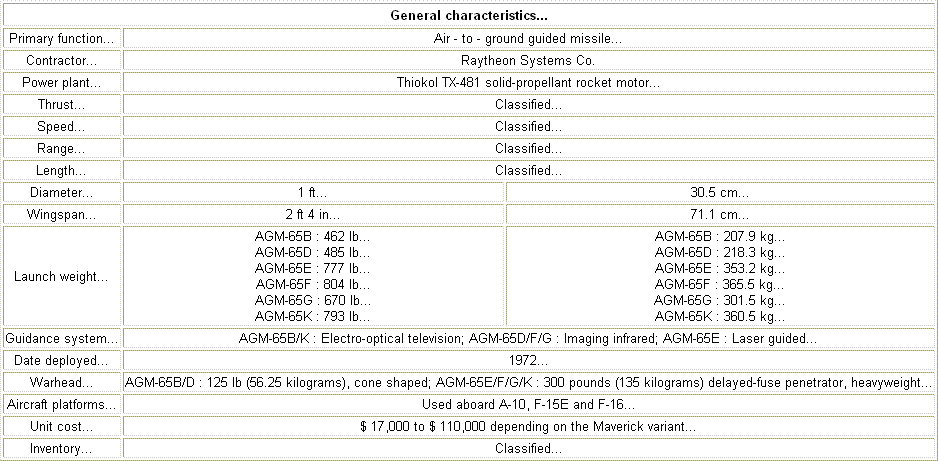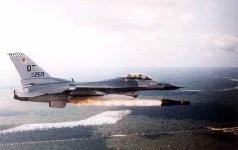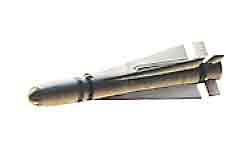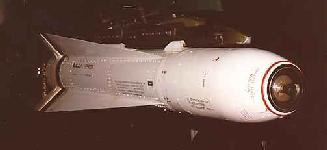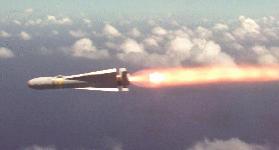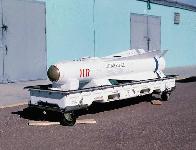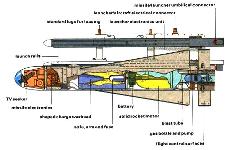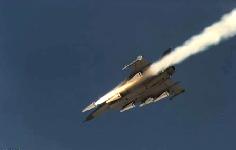
Info about the "Air to Ground" Missiles...
AGM - 65 G Maverick...
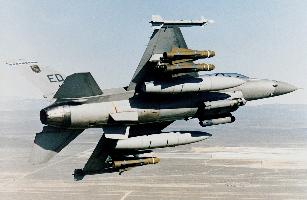
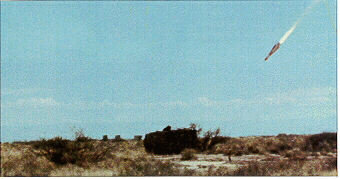
Background...
The AGM-65 Maverick is a tactical, air-to-surface guided missile designed for close air support, interdiction and defense
suppression mission. It provides stand-off capability and high probability of strike against a wide range of tactical
targets, including armor, air defenses, ships, transportation equipment and fuel storage facilities. Maverick was used
during Operation Desert Storm and, according to the Air Force, hit 85 percent of its targets. The Maverick has a
cylindrical body, and either a rounded glass nose for electro-optical imaging, or a zinc sulfide nose for imaging
infrared. It has long-chord delta wings and tail control surfaces mounted close to the trailing edge of the wing of
the aircraft using it. The warhead is in the missile's center section. A cone-shaped warhead, one of two types carried
by the Maverick missile, is fired by a contact fuse in the nose. The other is a delayed-fuse penetrator, a heavyweight
warhead that penetrates the target with its kinetic energy before firing. The latter is very effective against large,
hard targets. The propulsion system for both types is a solid-rocket motor behind the warhead. A-10, F-15E and F-16
aircraft carry Mavericks. Since as many as six Mavericks can be carried by an aircraft, usually in three round, underwing
clusters, the pilot can engage several targets on one mission. The missile also has "launch-and-leave" capability that
enables a pilot to fire it and immediately take evasive action or attack another target as the missile guides itself to
the target. Mavericks can be launched from high altitudes to tree-top level and can hit targets ranging from a distance
of a few thousand feet to 13 nautical miles at medium altitude.
Variants...
The Maverick variants include electro-optical/television (A and B), imaging infrared (D, F, and G), or laser guidance (E).
The Air Force developed the Maverick, and the Navy procured the imaging infrared and the laser guided versions. The AGM-65
has two types of warheads, one with a contact fuse in the nose, the other a heavyweight warhead with a delayed fuse, which
penetrates the target with its kinetic energy before firing. The latter is very effective against large, hard targets. The
propulsion system for both types is a solid-rocket motor behind the warhead. Maverick A has an electro-optical television
guidance system. After the protective dome cover is automatically removed from the nose of the missile and its video
circuitry activated, the scene viewed by the guidance system appears on a cockpit television screen. The pilot selects
the target, centers cross hairs on it, locks on, then launches the missile. The Maverick B is similar to the A model,
although the television guidance system has a screen magnification capability that enables the pilot to identify and
lock on smaller and more distant targets. The Maverick D has an imaging infrared guidance system, operated much like
that of the A and B models, except that infrared video overcomes the daylight-only, adverse weather limitations of the
other systems.
The infrared Maverick D can track heat generated by a target and provide the pilot a pictorial display of the target during
darkness and hazy or inclement weather. The Maverick E is being adopted in the AGM-65E version as the Marine corps laser
Maverick weapon for use from Marine aircraft for use against fortified ground installations, armored vehicles and surface
combatants. Used in conjunction with ground or airborne laser designators, the missile seeker, searches a sector 7 miles
across and over 10 miles ahead. If the missile loses laser spot it goes ballistic and flies up and over target, the warhead
does not explode, but becomes a dud. The Maverick F AGM-65F (infrared targeting) used by the Navy has a larger (300 pound;
136 kg) penetrating warhead vice the 125 pound (57 kg) shaped charge used by Marine and Air Force) and infrared guidance
system optimized for ship tracking. The Maverick G model essentially has the same guidance system as the D, with some
software modifications that track larger targets. The G model's major difference is its heavyweight penetrator warhead,
while Maverick A, B and D models employ the shaped-charge warhead. The Air Force accepted the first AGM-65A Maverick in
August 1972. A total of 25,750 A and B Mavericks have been purchased by the Air Force.
The Air Force took delivery of the first AGM-65D in October 1983, with initial operational capability in February 1986.
Delivery of operational AGM-65G missiles took place in 1989. AGM-65 missiles were employed by F-16s and A-10s in 1991 to
attack armored targets in the Persian Gulf during Operation Desert Storm. Mavericks played a large part in the destruction
of Iraq's significant military force. TV Mavericks have been experiencing declining reliability and maintainability since
exceeding their 10 year shelf life over 10 years ago. The Depot purchased a lifetime buy of all spare parts for TV
Mavericks in FY88 and those parts are running out. Due to funding shortfalls, the Depot has ceased to repair AGM-65A
Maverick missiles and concentrates on maintaining AGM-65B, AGM-65D, and AGM-65G Maverick missiles.

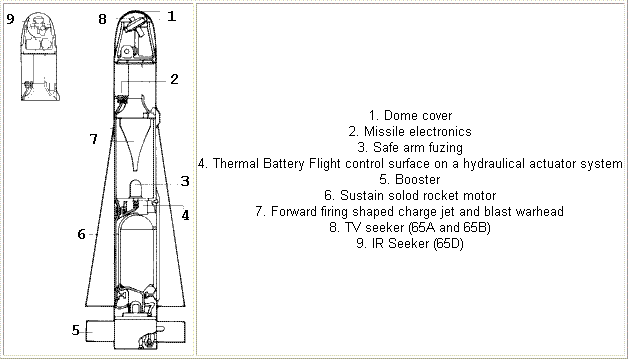
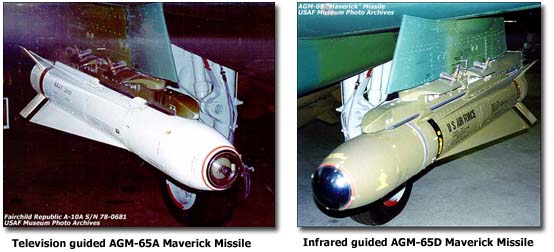
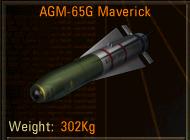
We have 1 AGM - 65 G at the game...
